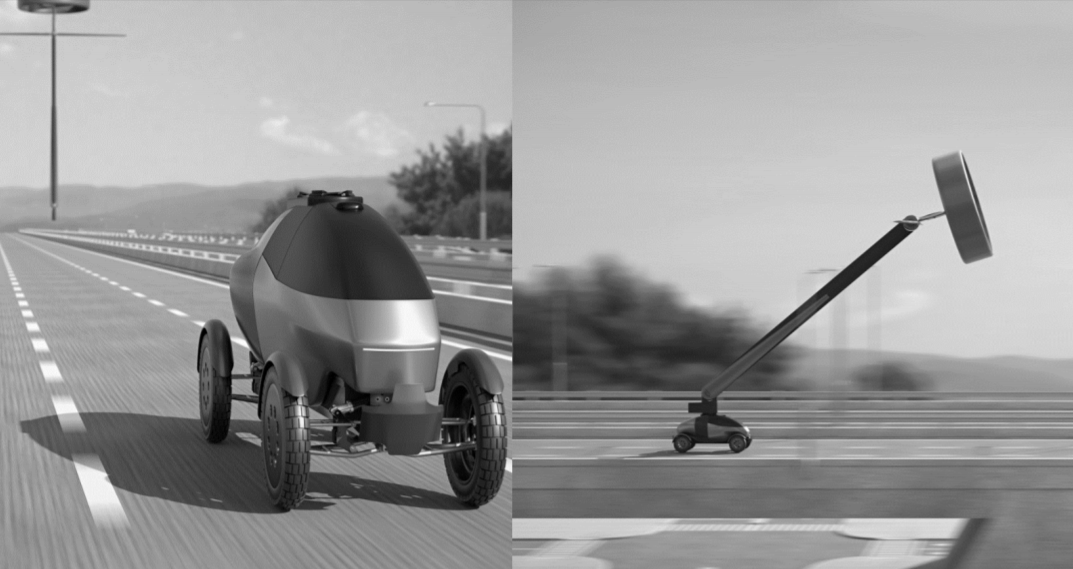
Companies are beginning to ask questions about the viability of Distributed Electric Propulsion (DEP) VTOL aircraft, says Thomas Melcher of https://www.sky-boom.com/
Sabastian Thrun, Larry Page’s right-hand man on his eVTOL projects, made a profound and long overdue announcement at the Air Force Agility Prime webinar held a few weeks ago. Clicking through a PowerPoint presentation, he touted his company’s accomplishments over the past decade stating, Kitty-Hawk has built and flown over 130 aircraft and made over 27,000 test flights. Two of his PowerPoint slides were dedicated to the Myths of Massive Infrastructure Needed. Displaying images of Uber’s vertiport concepts he said, “this approach is just wrong”. The header on his second slide simply had the word “REALLY” as a sarcastic poke at one of the more elaborate sky-port concepts. He went on to say the Kitty-Hawk Heaviside aircraft, of which they’ve built ten, are their most advanced eVTOL aircraft to date. Designed to carry just one person or 220lbs, the sleek aircraft has a range of 100NM and a cruise speed of 180MPH. He said, this is about the limit of what can be expected with today’s technology and that the rest is just hype…
These are resounding statements when you consider Larry Page funded his first eVTOL project back in 2009 and has probably accumulated more engineering hours than any other eVTOL developer. It also brings into question the claims of other eVTOL companies. One prominent eVTOL company claims their new four passenger + pilot aircraft will have a 200MPH cruise speed with a 150NM range…
I don’t believe Sabastian is worried about the successful integration of eVTOL aircraft into the transportation system as the only way to save his friend Larry from a life of poverty. With that in mind, it’s a pretty good bet his performance stats are accurate. There’s a lot of hype out there…
During the Agility Prime webinar, Mr. Thrun stated the Heaviside aircraft could be landed on a pad roughly half the size of a tennis court, he went on to jokingly suggest that perhaps we should look at tennis courts and grocery store parking lots as possible landing sights. His comments although humorous, reveal a tragic reality for DEP-VTOL aircraft. Horizontal tube-and-wing platforms cannot be integrated into the transportation system as ubiquitous urban mobility solutions. Over the past decade, eVTOL companies have been singularly focused on solving the problems of DEP-VTOL flight, believing they will eventually develop software to address every eventuality and weather anomaly – they have failed. Distributed Electric Propulsion (DEP) VTOL aircraft cannot answer even one of the five questions that would evidence a viable urban mobility solution, i.e., safety, response latency, aircraft storage, scalability, and profitability.
DEP-VTOL aircraft may provide a preferred alternative to conventional helicopters for short hop passenger transport, just as the new fixed-wing electric Eviation Alice aircraft, now in production, will provide a preferred alternative to the 9-passenger commuter aircraft. But the logistical issues associated with tube-and-wing designs will remain unchanged, you will still need to transport yourself to and from the vertiport or airport. These are not flying cars…
If personal transportation is going to move into the third-dimension the chosen system solution must check all the boxes. The air-taxi/vertiport design cannot check one box.
|
ð Safety: DEP aircraft are not safe enough in VTOL and can only be flown under the best weather conditions. ð Response latency: Improving vertiport/air-taxi response latency is logistically impossible, a 30-mile round-trip will require six taxi rides. UBER says they can prearrange cars to improve your experience… ð Aircraft storage: Logistically there is no way to store tens of thousands of DEP-VTOL aircraft. ð Scalability: The complexities of conventionally designed tube-and-wing DEP-VTOL aircraft are not easy to manufacture, just ask ICON aircraft. Building vertiport infrastructure will prove prohibitive for even the richest countries. ð Profitability: As a ubiquitous transportation solution, there is no path to profitability for the vertiport/air-taxi design. 2018 NASA UAM Market Study. |
It’s 2:00 am – last call, investors should stop serving the DEP-VTOL aircraft crowd. They need to wake-up, clear their heads, and ask real-world questions about the viability of the DEP-VTOL design and the practicality of building vertiport infrastructure. Future investment should be directed toward companies designing eVTOL aircraft that can answer all five questions, up front. Designs must show the ability to seamlessly integrate into the existing transportation infrastructure and effectively alleviate traffic congestion on the ground upon deployment. Most of all, developers should be able to articulate a verifiable path to profitability within a set time frame. Although it would seem investors would have asked these questions before jumping in. The hype surrounding flying cars is intoxicating and moving into the third-dimension seems so inevitable, after all George Jetson was flying around back in the 1960s. I often remind people that it wasn’t George’s car that was so remarkable, the remarkable part was when it collapsed into a briefcase… logistics.
The system solution should also address the evolving issues surrounding mass-transportation as a distribution hub for the spread of infectious diseases. eVTOL automobiles provide a mechanism through which the population can be individually scanned for symptomatic conditions while remaining mobile, without fear of getting infected or infecting others. Full autonomy is an absolute requirement for a ubiquitous urban air mobility system to function properly. Once you commit to this reality, the advantages of a two-part system solution become evident. Optimized ground vehicles coupled with optimized aerial drones, answer all logistical questions confronting UAM.
SkyBoom is a solution driven design developed to solve the worlds transportation problems and bring about a paradigm shift through the proven mechanism of increased automobile manufacturing.

